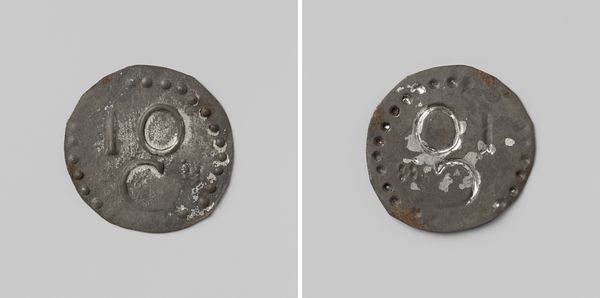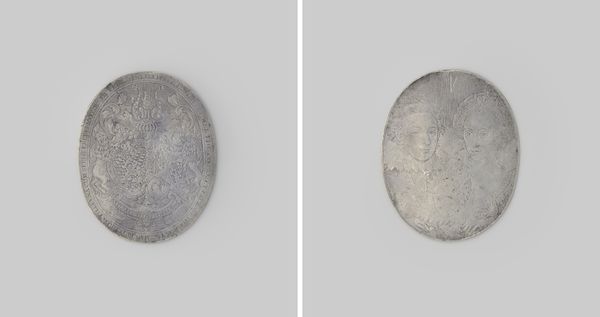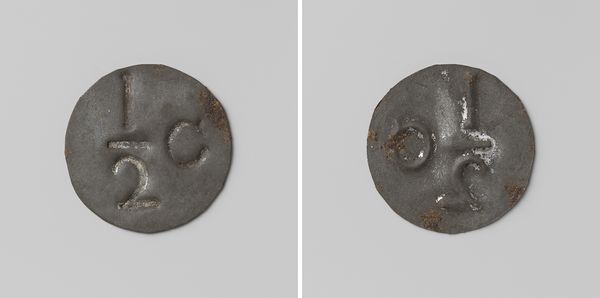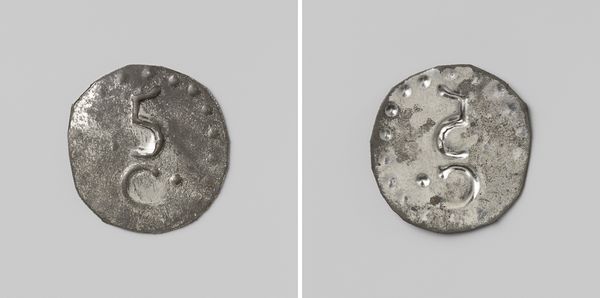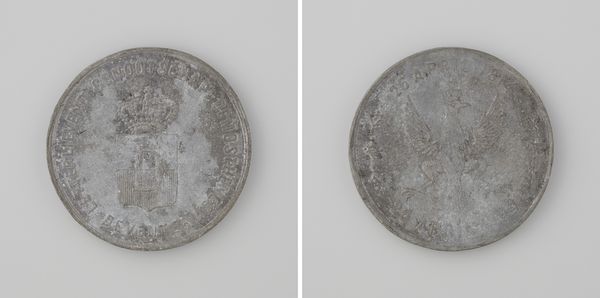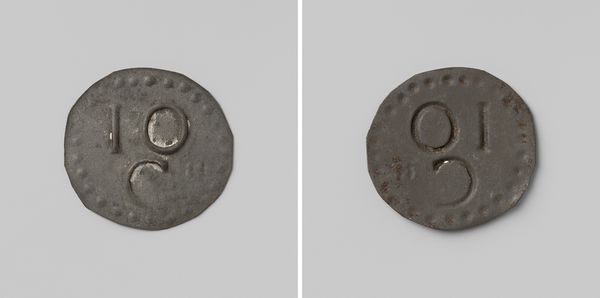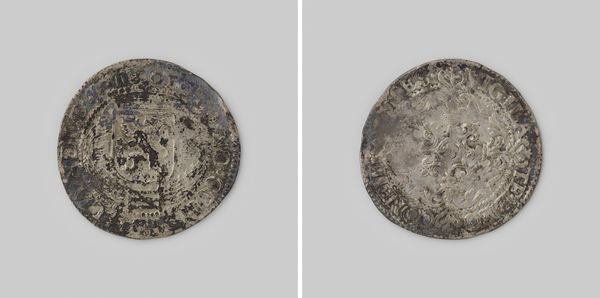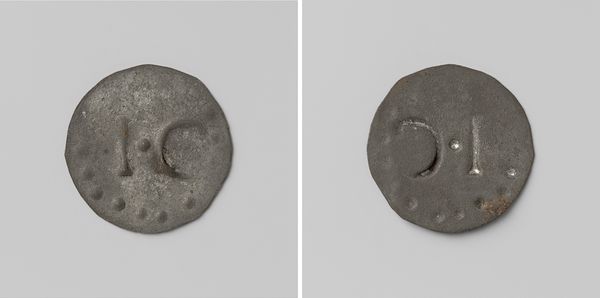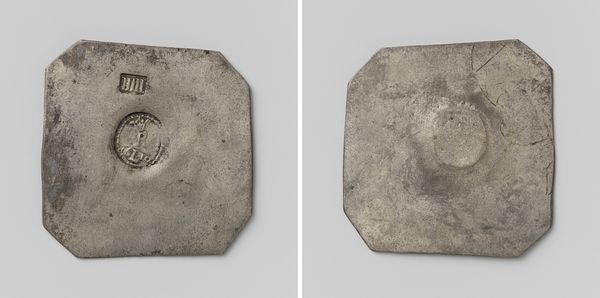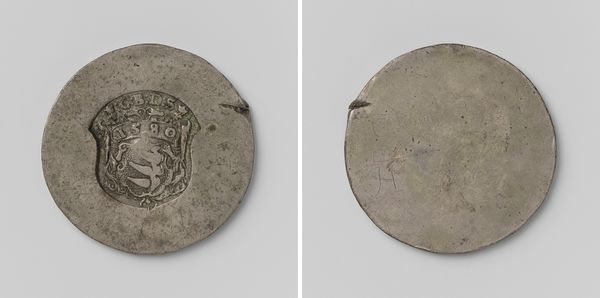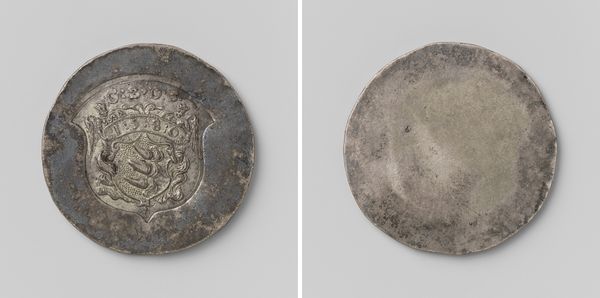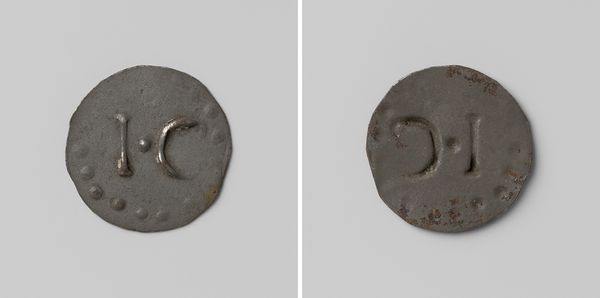
Twee eenheden, noodmunt uit Gulik, geslagen tijdens het beleg door Maurits, prins van Oranje-Nassau, vervaardigd door stukken te knippen uit serviesgoed en bestempeld met het monogram van Rudolf II, Duits keizer Possibly 1610 - 1629
0:00
0:00
print, metal, relief, engraving
# print
#
metal
#
relief
#
ancient-mediterranean
#
history-painting
#
engraving
#
miniature
#
monochrome
Dimensions: height 3.8 cm, width 4 cm, weight 9.81 gr
Copyright: Rijks Museum: Open Domain
Editor: So this piece is called "Two Units, Emergency Coin from Gulik," dating from around 1610 to 1629. Apparently, during a siege by Prince Maurits, they snipped pieces from tableware, stamped them, and used them as currency. It’s metal, monochrome… feels incredibly resourceful, even desperate. What stands out to you about it? Curator: What strikes me immediately is the repurposing of existing material. We see the tangible link between the domestic sphere—tableware—and the traditionally male sphere of war and finance. Consider the labor involved: clipping, stamping… This wasn't a mint, it was a crisis workaround. Editor: Right, a workaround… The imprecision, the rough edges... it makes traditional coinage seem so formal and removed from the immediate needs of people. Curator: Exactly. And think about the social context. Precious tableware, usually a sign of status and stability, is deconstructed and transformed into a medium of exchange. It's a material embodiment of disrupted social order, of priorities reshaped by conflict. Editor: That's fascinating, this really wasn't money in a traditional sense, but more a symbol of value decided by immediate need. Do you think it’s more art or artifact? Curator: I find that a limiting binary, don't you? Its aesthetic qualities derive precisely from its artifactual nature, from the socio-economic conditions of its production and consumption. We could perhaps say that it demonstrates 'art' existing where and when function demands. It prompts questions about labour, about value – whose labor, and whose values are truly represented by money? It is an early version of recycled art? Editor: I hadn’t considered that. Thinking about it as less of a failure to create official money, and more an innovative way of turning domestic materials to use makes so much more sense. Curator: Precisely. That transformation is where its significance truly resides. Editor: I learned so much about social transformation via materiality!
Comments
No comments
Be the first to comment and join the conversation on the ultimate creative platform.
